
After more than 35 years of operation, TBI is closing its doors and our website will no longer be updated daily. Thank you for all of your support.
Superheroic acts
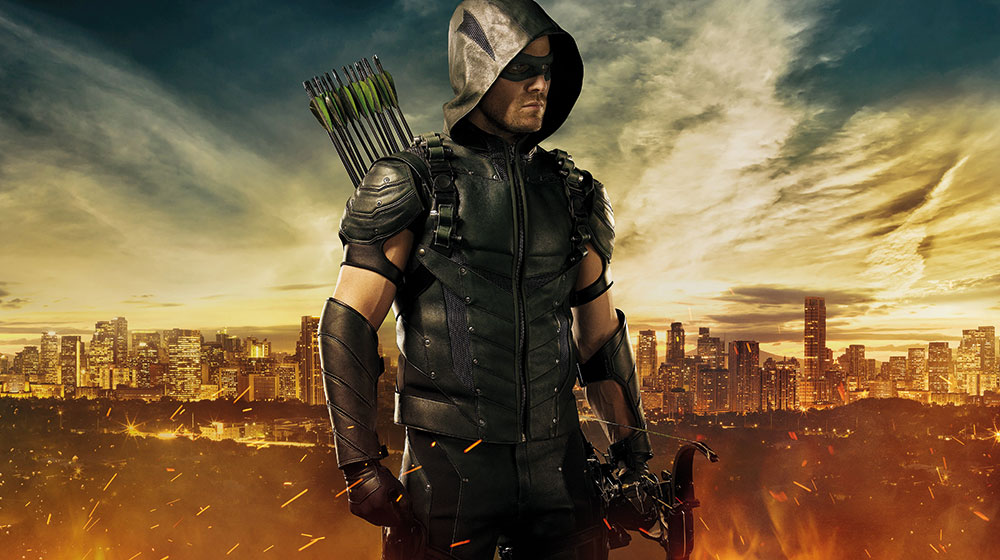 Ahead of another season of fresh US studio dramas, Jesse Whittock investigates the role superhero programming will play as different forms of the genre proliferate on channels and platforms around the world
Ahead of another season of fresh US studio dramas, Jesse Whittock investigates the role superhero programming will play as different forms of the genre proliferate on channels and platforms around the world
“Nearly every major network in the US has a superhero show,” observes one senior European acquisitions executive. Recent broadcast seasons in the US have seen ABC running Marvel’s Agents of S.H.I.E.L.D. and Marvel’s Agent Carter, CBS play Supergirl, Fox score with Gotham, NBC reboot Heroes as Heroes Reborn and try and fail with Constantine, and DC’s Legends of Tomorrow join Arrow and The Flash on The CW.
Since the Walt Disney Company paid US$4 billion for Marvel Entertainment in 2009 and Time Warner established DC Entertainment as a home for DC Comics in the same year, both the film and television worlds have seen an explosion in superhero franchises, programming and character development.
Glossy broadcast network series were soon added to the ever-present animated kids superhero series of the children’s TV networks, showcasing an array of superhuman crime fighters and their villainous counterparts. “Arrow was the one that made us all sit up,” says Catherine Mackin, director of programme acquisitions at UK channel operator UKTV.
Since The CW show’s launch in 2012, superhero programming has been the domain of pay TV giant Sky in Britain. “These stories are all about a crusader righting the wrongs that other people can’t,” says the European paycaster’s director of acquisitions, Sarah Wright, who joined from UKTV the same year Disney bought the Marvel universe’s 5,000 (and now 8,000)-strong stable of characters.
“The big hitters of the genre – like The Flash, Supergirl and Gotham – are all solid performers, and the sort of shows that networks like to keep around, as loyal fans mean steady ratings,” says Dan Whitehead, head of drama and digital at UK-based programme-trends analyst K7 Media.
“Superhero shows have been working for quite some time for us,” adds Sky’s Wright. “They are much-loved brands, and that creates a feeling of knowing what you’re getting. They are here to stay: look at all of the comics, the fanbases and the conventions.”
More recently, a new type of superhero genre has emerged following the original series-output deal Disney and Marvel secured with subscription on-demand service Netflix in November 2013. These shows, which begin with the release of Marvel’s Daredevil a year ago, take a tone Disney Media Distribution’s senior VP and general manager, EMEA, Mark Endemano describes as “more noir-ish and closer to the original graphic novel source material than the network stuff”.
“Those shows are given the ability to tell a story that has such high production quality and to really go in-depth into the characters,” he adds.
Netflix being an on-demand platform was also a factor in the deal to create Daredevil, Jessica Jones, Iron Fist and Iron Fist, according to K7’s Whitehead. “Episodic TV maps closest to the format of monthly comic books, and the SVOD binge-watch mentality has echoes of the trade paperback market, where fans wait for storylines to be collected into a single volume,” he says.
Daredevil, which follows a blind lawyer who becomes a fearless crime fighter, has been praised for its serialised format, plotting, brutal fight scenes and the performance of Vincent D’Onofrio, who plays villain Wilson Fisk.
 Jessica Jones, meanwhile, has been among the buzziest dramas of the 2015-16 season. The show has a female lead, played by Krysten Ritter, and besides the standard superhero trope of good-versus-evil, deals with topics such as rape, assault and post-traumatic stress disorder.
Jessica Jones, meanwhile, has been among the buzziest dramas of the 2015-16 season. The show has a female lead, played by Krysten Ritter, and besides the standard superhero trope of good-versus-evil, deals with topics such as rape, assault and post-traumatic stress disorder.
Iron Fist and Luke Cage-themed series will follow, before a miniseries involving all four lead characters, Marvel’s The Defenders, debuts.
“The Netflix deal with Marvel could set a template for the future – where development deals encompass a package of linked characters, each of which is expected to sustain their own show,” says K7’s Whitehead. “But it remains to be seen how that will pay off.”
He adds: “Certainly Jessica Jones trended hard and reviewed well, as did Daredevil to a lesser extent, but as with all binge-worthy shows the impact tends to be a big social media splash that vanishes after a few weeks, hence the need to keep launching new series.
“Marvel’s character catalogue means the material is there, but it also means more pressure to deliver quality shows.”
Sarah Wright – who now oversees acquisitions for Sky’s UK and Irish, Italian, and German and Austrian units – says that darker-themed shows can work on linear platforms, too.
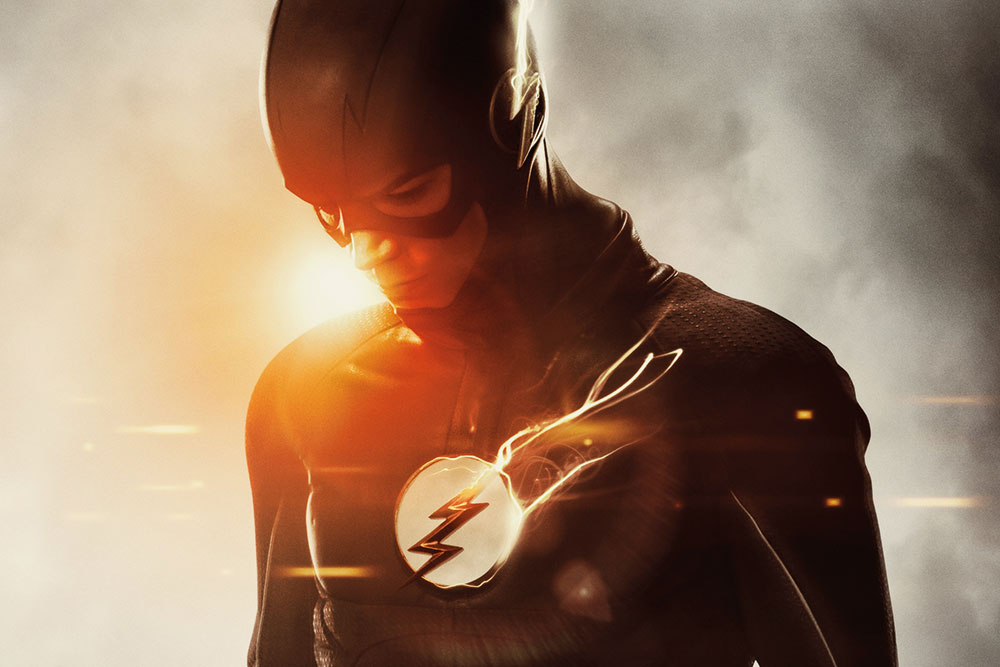 “Arrow isn’t always light,” she says. “The Flash (above) and Supergirl generally are, but Arrow can be more uncompromising. You could put darker themes on Sky 1, but the real question is, how much is too much superhero?”
“Arrow isn’t always light,” she says. “The Flash (above) and Supergirl generally are, but Arrow can be more uncompromising. You could put darker themes on Sky 1, but the real question is, how much is too much superhero?”
Disney’s Endemano says the “concept of superhero has changed” through the Netflix shows, which have a three-year global SVOD window before they can be sold through linear channels, and through darkly-themed films such as DC’s Dark Knight franchise. “These are darker characters who you grow real emotional attachment for,” he adds. “There is a far more sophisticated TV and film-going audience, and that means the superhero is not just someone in a suit.”
“Are you making something like The Flash or Supergirl, which both have a sense of fun, or are you selling an Arrow or Daredevil, darker and more violent fare that is unlikely to cross over into the family primetime market?” asks K7’s Whitehead. “Marvel and DC have both defined their respective universes on the big screen with very specific and deliberate tonal choices, to which audiences have responded.”
Endemano points to the relationship between the Marvel movies and television series, and the thousands of characters that populate the comic books. “The great success of the movies has had a halo effect on television; the ability to bring big stories and play them on television,” he says. “One big change has been the production values and CGI bringing that through.”
UKTV’s Mackin, whose networks play supernatural dramas like Grimm to strong ratings, says superhero shows skew relatively young, but notes they are “also massive fan shows. The amazing thing about the genre is people collect them and are willing to follow wherever they go – first on the linear broadcast and then buying the box sets. That’s why it’s such a revenue spinner for the studios, who can monetise in various ways”.
Disney’s Endemano also says the revenues of the movies – the original Avengers Assemble film went beyond US$1.5 billion at the box office, while even more niche efforts such as Ant Man are now taking more than US$500 million worldwide – suggest superheroes are now going much broader. “There are only so many 15-year-old boys in the world, so that shows there are other demographics watching,” he says.
Ovum’s leader of digital media practice, Nick Thomas, says those Marvel audiences are growing because of the “execution” of the franchises. “The way the content has been created, distributed and marketed has been key to that sustained success,” he says.
This, combined with the idea that superhero shows do well in periods where culture is having an identity crisis, and that the franchises rather than individual stars “guarantee success”, are relevant to the recent narrative, says Thomas.
“Younger fans don’t care about stars in the way that fans used to,” he adds. “A survey last year demonstrated young audiences prefer YouTubers to the stars Hollywood movies promote.
“But fans do care about franchises, and it’s a safer bet: given that most movies are expensive prototypes that lose money, it make sense to exploit an existing brand that already has a fanbase across different formats and platforms, where audiences know what to expect. Even if they don’t follow a particular superhero, they understand the genre.”
Marvel and DC have dominated television’s superhero story since 2009, and other attempts to barge in on the space have produced mixed results. NBC’s Heroes revival ran between September 2015 and January 2016 to middling ratings and was not renewed, while Powers (below) made a buzz in the industry in 2014 as the first original series for PlayStation Network, the content platform of the PlayStation video games consoles.
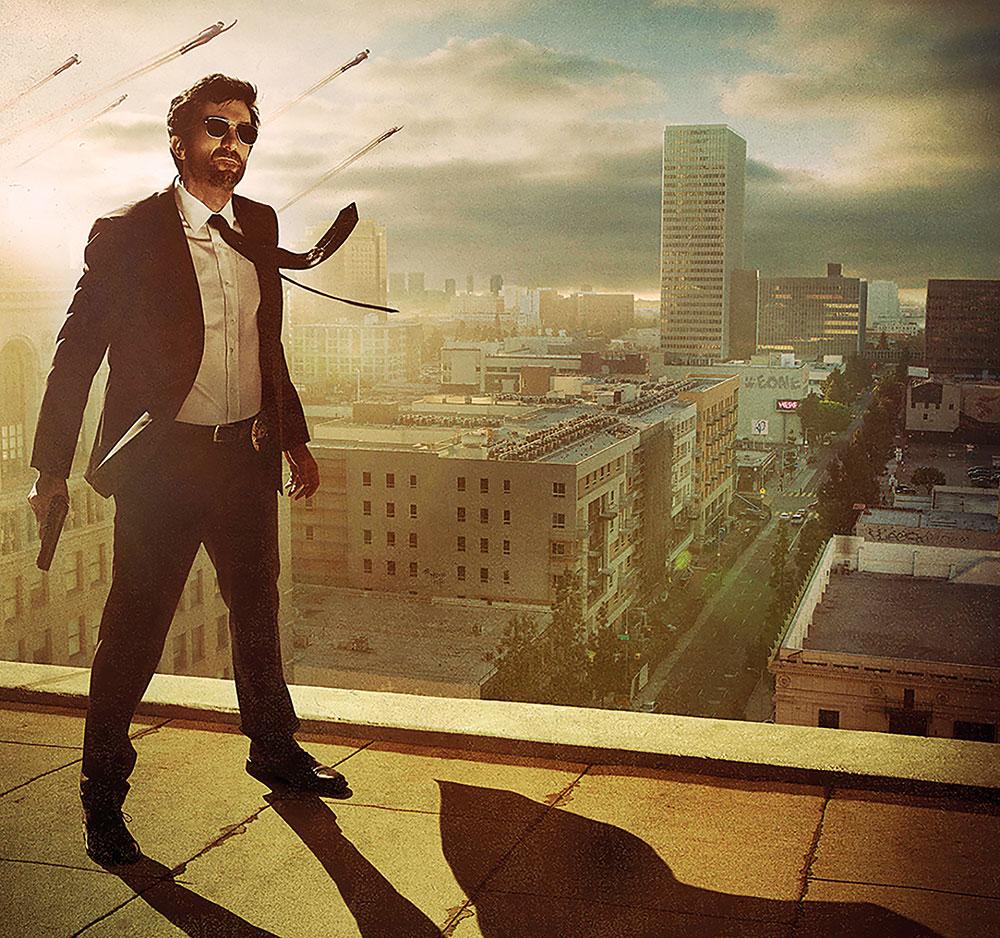 The ten-episode Powers is based on comics set in a violent world in which a pair of homicide detective investigate people with god-like abilities, with PlayStation stablemate Sony Pictures Television distributing. A second season was commissioned in May last year, and it has now sold into the UK to Viacom’s digital free-to-air network Spike.
The ten-episode Powers is based on comics set in a violent world in which a pair of homicide detective investigate people with god-like abilities, with PlayStation stablemate Sony Pictures Television distributing. A second season was commissioned in May last year, and it has now sold into the UK to Viacom’s digital free-to-air network Spike.
Starz is now lining up American Gods, a superhero-style drama from Bryan Fuller and writer Neil Gaiman (Heroes producer Michael Green is also an auspice). Fuller has said he wants to create “a Marvel Universe not with superheroes, but with gods”, and distributor FremantleMedia will debut it later this year ahead of its US release in 2017.
Meanwhile, the studios continue to develop new IP based on their universe, albeit in new formats for the new broadcast season.
ABC has given Marvel Television put pilot commitment on Damage Control, a half-hour comedy from Daily Show executive producer Ben Karlin that’s based on Marvel comics about a crew that specialises in the clean-up of superhero conflicts. NBC is lining up a half-hour pilot, Powerless, which comes from Warner Bros. and DC. Based on DC Comics characters, the workplace comedy is set in a miserable insurance company that exists within the DC universe. Warner pulled off a coup by signing Vanessa Hudgens as its lead.
Meanwhile, cable channel FX has handed Downton Abbey’s Dan Stevens the lead in Legion, which comes from Marvel Television and FX Productions and is set within the X-Men universe.
So, as we look ahead, why the change of direction, considering ratings of dramatic superhero titles remain strong (Legends of Tomorrow took 572,000 for Sky 1 on debut, for example)? Disney’s Endemano has an answer: “Wherever there’s success, people want to emulate that success. We have literally thousands of characters with interconnecting stories in the Marvel Universe. Ultimately it will always be about the stories – and then it comes back to the breadth and depth.”
Who’s your favourite superhero?
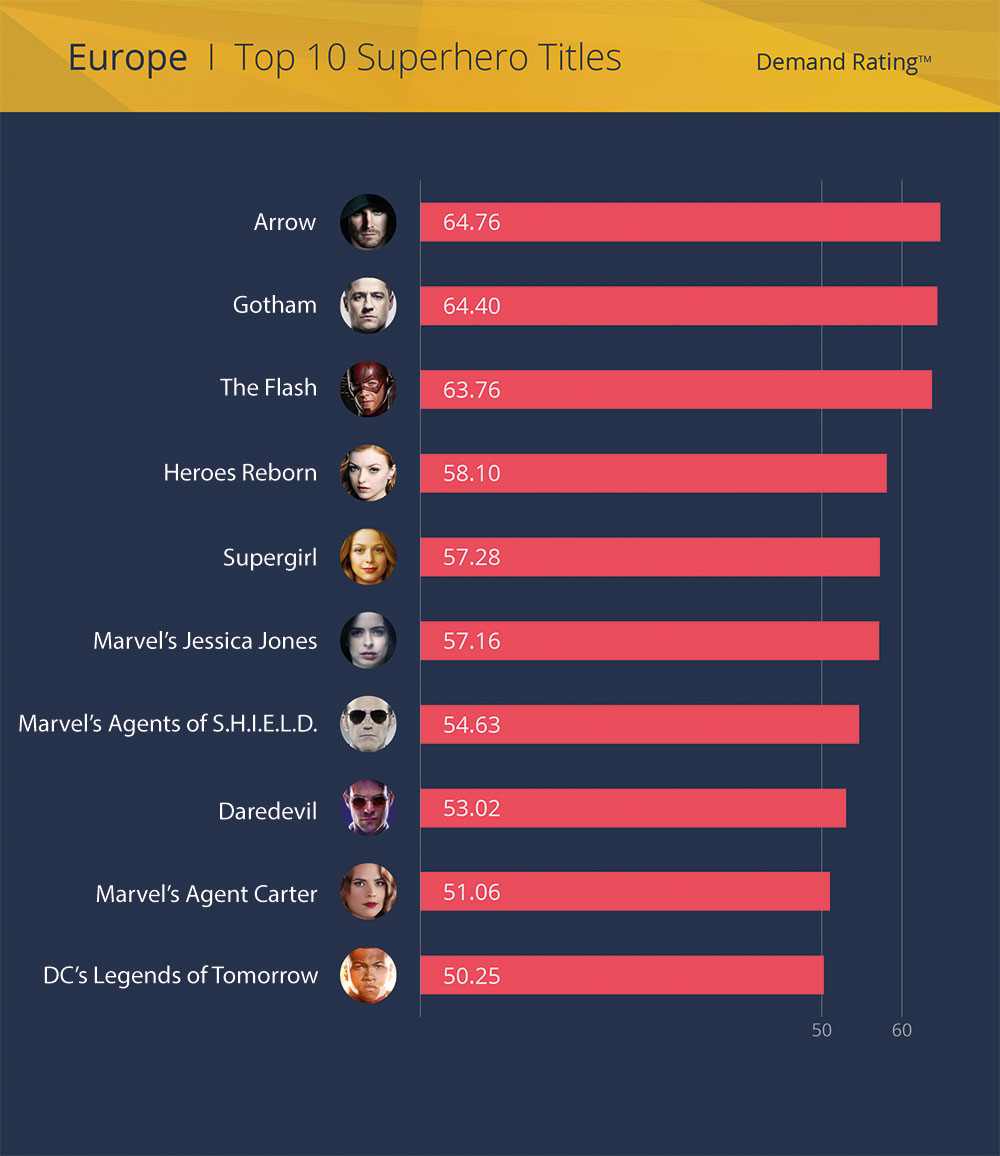 As Parrot Analytics notes in this exclusive research, it is impossible to shoot an arrow at a TV guide these days without hitting a drama series that’s also a comic book adaptation. So how do you compare the success of one superhero show from another? How do they stack up?
As Parrot Analytics notes in this exclusive research, it is impossible to shoot an arrow at a TV guide these days without hitting a drama series that’s also a comic book adaptation. So how do you compare the success of one superhero show from another? How do they stack up?
US-based Parrot, a media-focused data-science company, might have an answer. The firm has used its patented ‘demand expression’ and ‘demand rating’ measurements to gauge appetite for superhero series in ten European countries – Denmark, France, Germany, Italy, Netherlands, Norway, Russia, Spain, Switzerland and the UK – between January 2 and March 2, 2016.
The results make pleasant reading for Warner Bros. Entertainment and DC Comics. Arrow, which was the first superhero TV drama to follow Warner’s creation of DC Entertainment in 2009, is the most demanded of its genre in 2016.
The show – from Warner Bros. Television, DC Entertainment, Bonanza Productions and Berlanti Productions for The CW and about a hooded vigilante who operates on the streets of Starling City – had a demand rating of 64.76 (demand ratings can go upwards beyond 100 points, though this would be very unusual).
Arrow narrowly beat out two other DC titles: Gotham, which took a 64.40 rating, and The Flash (63.76).
Gotham, originally for Fox, follows the life of Batman associate Commissioner James Gordon in his younger days as an active officer, and comes from DC, Warner and Bruno Heller’s Primson Hill Productions. The Flash, another Warner-DC-Bonanza-Berlanti effort and an Arrow spin-off, was The CW’s second-biggest premiere ever in 2014.
It follows a social-awkward crime scene investigator searching for answers about his mother’s murder who develops superhuman speed after being struck by lightning.
All three series feature male heroes and skew relatively young – Green Arrow / Oliver Queen begins Arrow as a billionaire playboy, Gotham’s Detective Gordon is a new recruit paired with an older gumshoe, and The Flash / Barry Grant is a brilliant but junior Central City assistant police forensic investigator.
“It’s clear from the Parrot survey that all these shows rely heavily on being social-media friendly, in that social media helps to drive awareness among fans and not-yet-fans,” says Nick Thomas, leader of digital media practice at UK media research house Ovum. “While this is clearly a huge driver among a core demo of on-demand viewers, it is also encouraged and harnessed well by the distributors and the VOD providers to drive interest.”
Sarah Wright, director of acquisitions at pan-European pay TV outfit Sky, says the importance of a social strategy around superhero series is “enormous” for broadcasters, but adds: “It’s not the only thing we think about, because we think very broadly about our shows, and social only reaches a particular audience”.
Sky drives demand for some superhero shows by creating in-house ‘fancasts’, short-length promotional programmes that highlight when, where and why audiences should tune in. Others attract more of a natural shared family audience, adds Wright.
Parrot’s top-10 list was rounded out by the recently cancelled NBC reboot Heroes Reborn; CBS new-season effort Supergirl; Netflix drama Marvel’s Jessica Jones; Marvel’s Agents of S.H.I.E.L.D, originally for ABC; Marvel’s Daredevil, another SVOD series; Marvel’s Agent Carter; and new DC effort Legends of Tomorrow.
Female Superheroes go to war
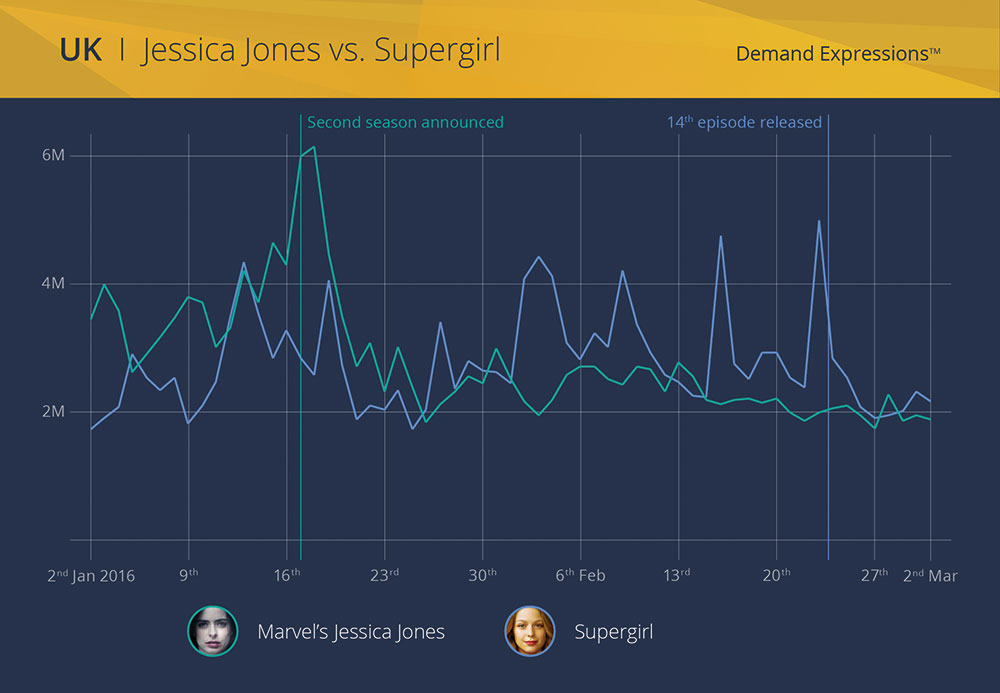 A second part of Parrot’s exclusive analysis for TBI pits two of television’s newest – and toughest – female superheroes, and the universes of DC Comics and Marvel Entertainment, against each other in the UK. In one corner is glossy new CBS broadcast hit Supergirl (locally for Sky 1) and in the other, dark Netflix serial Marvel’s Jessica Jones.
A second part of Parrot’s exclusive analysis for TBI pits two of television’s newest – and toughest – female superheroes, and the universes of DC Comics and Marvel Entertainment, against each other in the UK. In one corner is glossy new CBS broadcast hit Supergirl (locally for Sky 1) and in the other, dark Netflix serial Marvel’s Jessica Jones.
As an overall rating, Parrot found the shows in almost equal demand in Europe (Supergirl at 57.28 and Jessica Jones at 57.16, see page 38). Further investigation (see graph below) highlights some interesting trends. Launched on November 20, 2015, Jessica Jones’ demand was well above Supergirl’s on January 2, 2016, when the deep-dive analysis began, with almost four million registered demands compared with fewer than two million. Ratings then evened out until the middle of the month, when a second season of Jessica Jones was commissioned and demand peaked above six million.
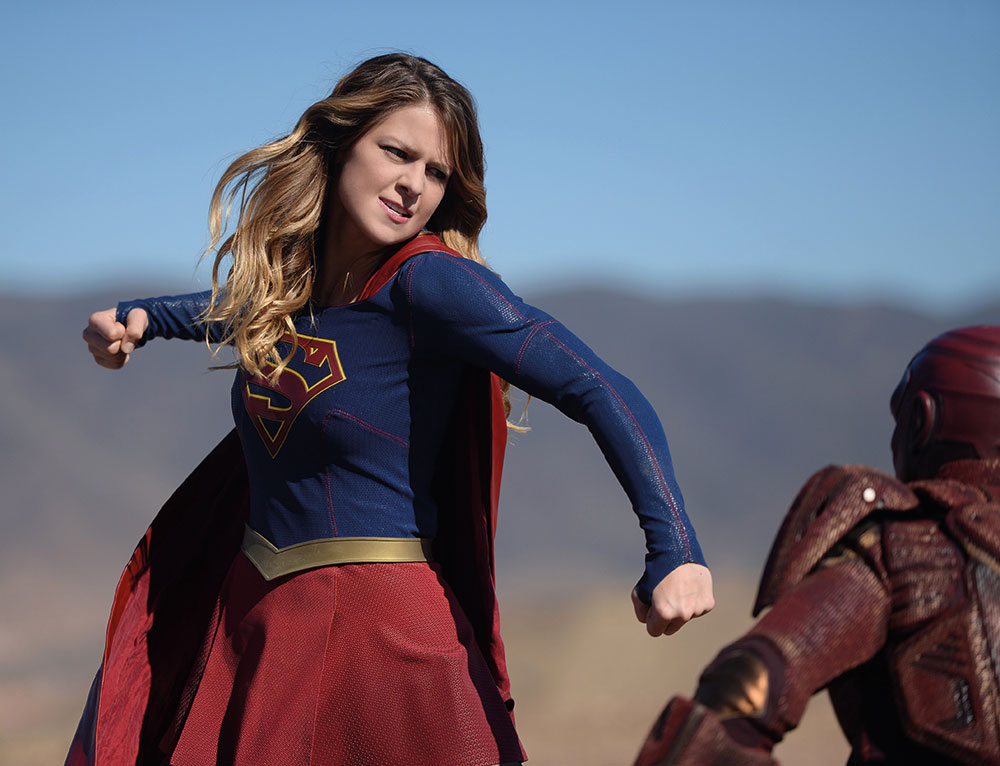 After the excitement died down, Jessica Jones fell below two million for the first time, and began to consistently track lower than Supergirl, which debuted in the UK on pay TV channel Sky 1 in an 8pm Thursday slot on October 29 and runs to 20 episodes.
After the excitement died down, Jessica Jones fell below two million for the first time, and began to consistently track lower than Supergirl, which debuted in the UK on pay TV channel Sky 1 in an 8pm Thursday slot on October 29 and runs to 20 episodes.
Supergirl has since seen spikes of more than four million around each episode, while Jessica Jones, with all 13 episodes released to satisfy binge-hungry Netflix subscribers, seeing demand plateau in region of two million daily.
Overall, Parrot describes both series, and their superhero leads, as demanding “a high level of demand overall for female-led superhero series in the United Kingdom”.
Source and methodology: Parrot Analytics assessed demand for popular superhero shows through various ‘demand expression platforms’ including social-media and photo-sharing platforms such as Facebook and Instagram, blogging and microblogging platforms such as Tumblr, wikis and informational sites, peer-to-peer protocols and file-sharing platforms. Parrot’s artificial-intelligence systems assess billions of data points to reach the overall demand rating


